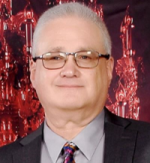Poor separation performance is typically blamed on the separator itself with the main target being the internals. However, after an analysis of the issues, the root cause is often found to be a failure in areas related to the separator/internals. Shortcomings in design, installation, instrumentation, and operation can lead to poor separator performance.
Part 1 covered design issues, and Part 2 addressed installation issues. This final article in the three-part series will focus on instrumentation and operating issues. Brief problem statements, root causes, and lessons learned associated with case histories of troubleshooting separators are given.
A) Contact tower with bottom integrated scrubber
A glycol contact tower was designed with a bottom integrated scrubber, chimney tray, and packing. Operations reported loss of glycol and the inability to maintain a liquid level on the chimney tray. The bottom scrubber was blamed for not separating the condensate leading to foaming of the tower and hence, the loss of glycol and lack of level.
When the tower drawings were reviewed by the internals supplier, it was evident that the bottom nozzle connection of the chimney tray level instrument (DP cell) was below the chimney tray instead of above it. Basically, little DP was measured, resulting in the glycol drawoff valve staying closed and the glycol level being at the top of the chimney openings. Glycol was being lost through the packing, as well as back down through the chimney tray and out with the condensate.
Lessons Learned
- Do not always automatically blame the separation process. Do a thorough RCA (root cause analysis) and include level instrumentation/controls.
- Designing in siloes can lead to errors being missed. Vessel drawings with nozzle locations that impact internals should be shared with internals supplier for review.
B) Three-phase separator
A three-phase separator was yielding high water-in-oil content. Initially, this poor performance was blamed on the internals: central inlet cyclones, distribution baffles, plate packs, and mesh demisters.
During an on-site investigation, the internals supplier noted that the sight-glass gauge showed a mismatch with the float-level measurement in the external bridle that controlled the vessel liquid level. It was then suspected that an oil/water emulsion in the float level bridle was causing an actual level too high, perhaps pushing water over the weirs. The solution was to flush the bridle to obtain “clean” fluids.
Lessons Learned:
- Periodically flush your level bridles to ensure they are measuring with the correct fluids.
- Verify that the liquid level that shows up on your DCS (distributed control system) screen in the control room matches the instrument reading and visual (sight-glass) observations. Disagreement between duplicate measurements should be investigated.
C) Inlet scrubber with a cyclone mist eliminator
The inlet pressure was reduced, and liquids were expected in an inlet scrubber due to the operating point moving inside the phase envelope, but no liquids were observed. An investigation showed that drain tubes from the cyclone deck needed to be submerged for liquid lock to prevent gas shortcutting through the liquid drain path. This was not an issue when there were no liquids.
After prefilling the vessel with glycol to create the liquid lock, significant liquids were observed. However, the vessel could not operate on its own as it would shut down on the high-level trip even though the level-control instruments registered a lower level. Upon inspection, the liquid level in a sight glass was much higher than the level instrument reading. It was found that the level-control instruments were calibrated for air/water (and thus the unit had not been working since installation). With an air/water density difference higher than that of gas-condensate, the level-control instruments would register a level lower than actual. The vessel had to be manually operated (person standing next to the sight glass) until the instruments were recalibrated.
Lessons Learned:
- Calibrate level instruments with proper fluids/densities
- Drainpipes must be sealed to prevent gas bypass. Level control must be verified during commissioning even without liquids available in the feed. Include sight glass for levels (if impossible, add another redundant instrument principle).
D) Two-phase separator with inlet cyclones
As flow was ramping up during startup, significant foaming was observed in a separator with inlet cyclones and the startup was aborted (repeatedly) prior to reaching target rates. The cyclones were expected to break incoming foam. Upon review, it was found that the startup with ramp-up process was aborted with flow below the turndown of the inlet cyclones, i.e., not enough g’s to break foam. A new attempt was made to continue the ramp-up through the foaming rates until reaching the turndown of the cyclones, at which point the foam issue disappeared.
Lessons Learned:
- Provide operating window to operations. Verify startup, ramp-up cases in design.
E) Compressor suction drum
An intermediate-pressure compressor suction drum is connected to two separator compressors through two separate nozzles and mist eliminators. The drum is horizontal with a central inlet device and mesh/vane mist eliminators at each end. One compressor was suffering from high carryover and vibration. The compressor seal eventually failed, but the plant was able to operate with just one compressor until a planned shutdown. Inspection revealed that the mesh pad of the poor performing side had “collapsed”. The tie wire was completely corroded through, the mesh detached from the gas box, and what was left was laying on the floor of the vessel. Also, neither mesh had been replaced in the previous turnaround and inspections (T&Is) nor in over 15 years.
Lessons Learned:
- Replace mesh pads during T&Is to ensure mist eliminator is in working order.
- Inspection of supports is also important.
F) Production separator liquid carryover
The inlet pressure of a production separator with an inlet vane distributor and vane pack mist eliminator was decreased, but mass flow rate was kept the same. The lower pressure resulted in higher velocities that caused excessive mixing/shearing of oil and water, higher liquid entrainment, and droplet shearing. The end result was higher water in oil, oil in water, and liquid carryover. The higher entrainment and smaller droplets overloaded the vane pack. The separator had to be revamped with better internals: inlet cyclones, demisting cyclones, perforated baffles, and plate packs.
Lessons Learned:
- Always evaluate the real impact if production pressure decreases. Particularly, look at actual volumetric flow and not MMscf/D (standard) volumetric flow which will not show the impact of pressure.
G) High dew point
A vertical scrubber with horizontal flow mesh/vanes was working satisfactorily at the design rate. However, the flow rate was turned down to 25% of design, expecting the scrubber to still work. urndown to 25% resulted in liquid carryover in gas making the gas fail dew point sales specification. CFD (computational fluid dynamics) was used to model the flow and drop size was identified as the main issue. At low rates, the mesh was not able to capture/coalesce small drops for the vanes to work efficiently. A full-diameter horizontal (vertical flowing) mesh pad was installed below the original mesh/vanes to cover the low rates.
Lessons Learned:
- Mist eliminators do not have an infinite turndown. Even mesh has a turndown limit as it takes droplet impact velocity with the wires to capture small droplets. For this vessel, the mesh was rated at 8-micron separation at full rate, and at 25% rate it was rated at 20-micron. The difference between 20-micron and 8-micron resulted in failure to meet sales specification.
H) Two-phase separator
This example is for the reader to ponder. We return to a previously discussed case because it is a prime example of how a small error can create a large amount of work.
An end-user customer reported to the vessel designer that no liquid level was present in the vessel and there was 100% liquid carryover, i.e., basically, the separator was not separating anything. The vessel had an inlet vane device and axial flow cyclone mist eliminator. Here are some typical troubleshooting steps you might consider.
- Check Instruments
- Calibration recently
- Check vessel gauges/level bridles (after flushing)
- Operating conditions
- Actual vs. design
- Check PVT (pressure/volume/temperature)
- Check sizing of internals
- Inlet momentum
- Vessel gas space K-factor
- Check cyclone sizing and drainage requirements
- Check flow distribution
- Inlet-pipe CFD plus droplet shatter
- Gas-phase CFD model
The field personnel were asked to check the instrumentation and reported that they were properly calibrated and in working order. A significant amount of office troubleshooting (re-evaluating the sizing, CFD modeling of flow in the inlet pipe and vessel as well as droplet shattering/tracking) was conducted by both the supplier and end-user.
- What do you think is the root cause?
- For the answer as well as other examples, refer to Savvy Separator article, “5 Lessons To Simplify Separator Troubleshooting.”
The overall lessons learned are:
- Level instrumentation/controls can impact separation efficiency.
- Keep up with maintenance (such as flushing bridles, replacing mesh).
- Understand turndown/operating range of the internals.
- Understand the effect of pressure on separator rating.
If you have a separator story to share in a future article, the author may be reached at r.w.chin@att.net.

Robert (Bob) Chin is a cofounder and past chair of the SPE Separations Technology Technical Section. He is author/editor of the series of Savvy Separator articles published in SPE Oil and Gas Facilities magazine, and creator of the Savvy Separator Training From Home Video Series. Chin is a consultant and cofounder of Padden Engineering. He retired from Shell in 2014. He joined the company in 1981 and conducted advanced research on multiphase flow, leak detection, and separations. In 1999, he left the company to form a separator design and supply company. He returned to Shell in 2006 and led teams in facilities for enhanced oil recovery and subsea processing research and development. He may be reached at r.w.chin@att.net.

Jimmie Riesenberg is retired from Chevron Corp. after 34 years in process/facilities engineering with Texaco and Chevron. He is the chair for the API 12J Separations Committee and was a coauthor of the GPSA Engineering Data Book, Section 7—Separations. He was the Chevron separations lead, including serving as the lead author for the Chevron Separations Design Guideline and led design assurance for separator design. He is a past chair for the SPE Separations Technology Technical Section and chair of the Technical Advisory Committee for the STAR (Separation Technology Research Program) JIP. Reisenberg holds MS and BS degrees in chemical engineering from Drexel University.

